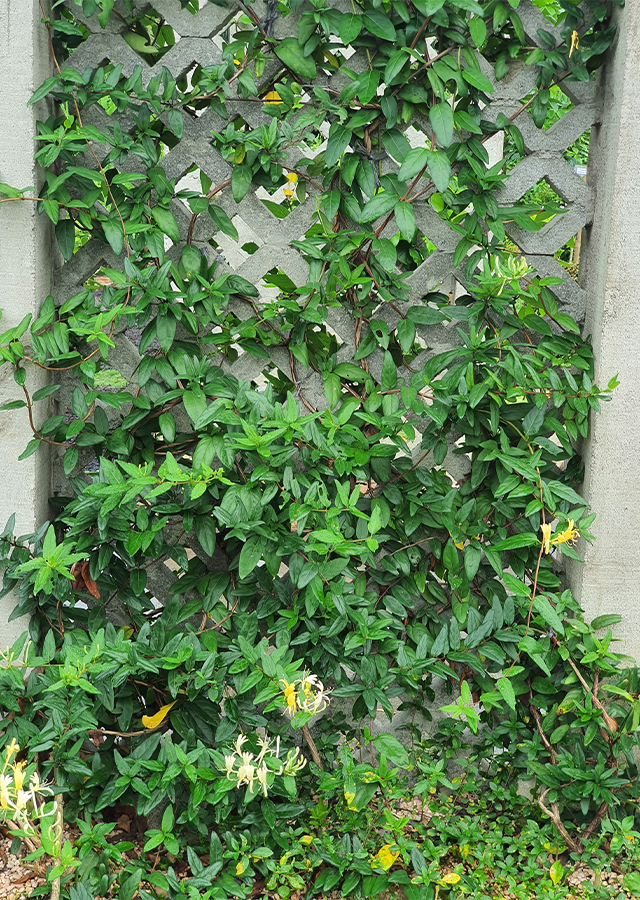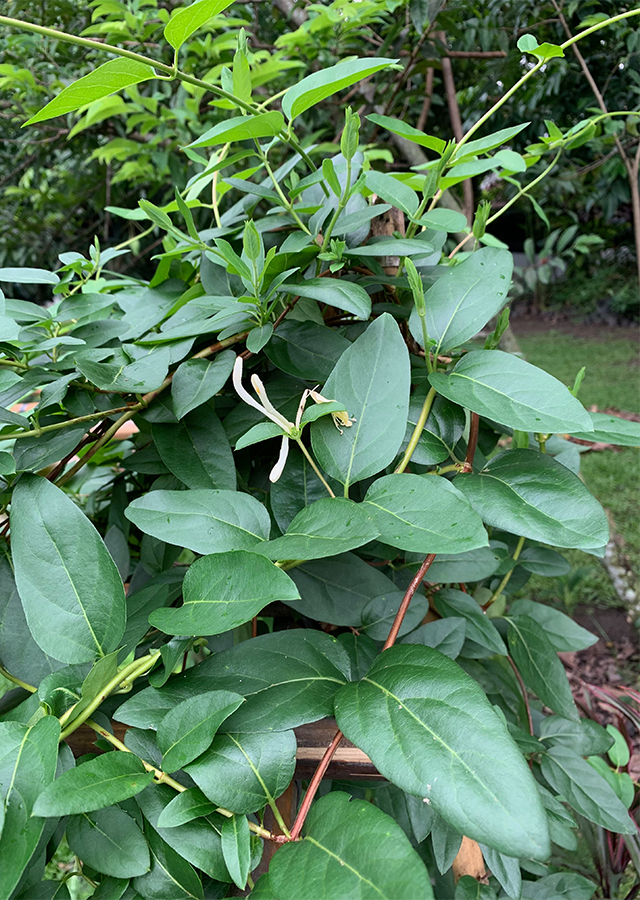Traditional Herbs from Lonicera japonica
obat_influenza
- Take 30 g of fresh camphorfuli leaves, wash them clean.
- Boil them with 200 ml of water until boiling for 15 minutes then strain.
- After it cools, drink it all at once, do it 3 times a day
obat_radang_uterus
- Take 60 g of fresh camphorfuli leaves and wash them.
- Boil them in 400 ml of water until boiling or for 15 minutes then strain.
- After cold, drink 2 times a day (morning and evening).\u00a0
What is Lonicera japonica Looks like??



Parts of Lonicera japonica that could be used
- Leaves
- Flowers
- Twigs
Lonicera japonica Distribution
Native to North America and approximately 180 species have been identified in North America and Eurasia. Usually grown as an ornamental plant because it has fragrant and beautiful flowers, but has become an invasive species in a number of countries. Camphorfuli is also used in traditional Chinese medicine. The leaves can be cooked as a vegetable, and the flowers and leaves can be used as tea. Camphorfuli produces oil which, apart from being used as medicine, is also used as an aromatherapy fragrance and an ingredient in cosmetic products.Agroecology of Lonicera japonica
Camphorfuli can grow outside the low-highland subtropical zone at an altitude of 743 m above sea level, with annual rainfall of 1,000 mm/year, with high humidity and direct sunlight. This plant can grow well in soil that has good drainage, with a soil pH of 4-8.
Morphology of Lonicera japonica
- Fabrous roots, blackish brown.
- Stems round, hard, tough, flexible, brown.
- Leaves opposite, simple oval, 1\u201310 cm long.
- Flowers fragrant, white, rose , red, or yellow. When the flowers fall, clusters of round fruit are formed that are red, purple, orange, or green.
- The fruit is a round berry that is green and turns black when the fruit is ripe (old).
- Round seeds egg until oval, small, hard, brown, middle surface flat to concave.
Cultivation of Lonicera japonica
- Propagation via seeds, cuttings and grafts.
- It is best to plant before the rainy season.\u00a0
Lonicera japonica, more details :
Chemical Content of Lonicera japonicaPhenolics, flavonoids, anthocyanins, sitosterol, α-amyrin, β-amyrin, campesterol, stigmasterol, oleanolic acid, ursolic acid, luteolin, luteoloside, quercetin, routine, chlorogenic acid, stigmasta-3,5-dien-7-one, 24-methylenecycloartanol,
Benefits of Lonicera japonica
Antioxidant, antitumor, antibacterial, anti-inflammatory, antimutagenic, antiatherosclerotic, lowers cholesterol, improves blood flow, treats flu, reduces fever, inflammation of the uterus, prevents coronary heart disease and angina (chest pain), increases metabolism, and is anti-aging.
Simplisia of Lonicera japonica
- Choose camphorfuli flowers that will bloom in a trumpet shape. Wash them thoroughly and drain them.
- Arrange them in a container and place them in the shade. Leave the flowers to dry, become brittle and break easily.
- Grind the flowers into powder. Store in airtight container.\u00a0
Another Facts for Lonicera japonica :
Synonym of Lonicera japonicaCaprifolium brachypodum� G.Gordon., Caprifolium japonicum� (Thunb.) Dum.Cours., Caprifolium roseum� Lam., �
Habitus of Lonicera japonica
Creepers. Annual vines, reaching 5-8 m in length
Habitat of Lonicera japonica
- Wetland", "River Edge", "Forest", "Coastal
No comments:
Post a Comment